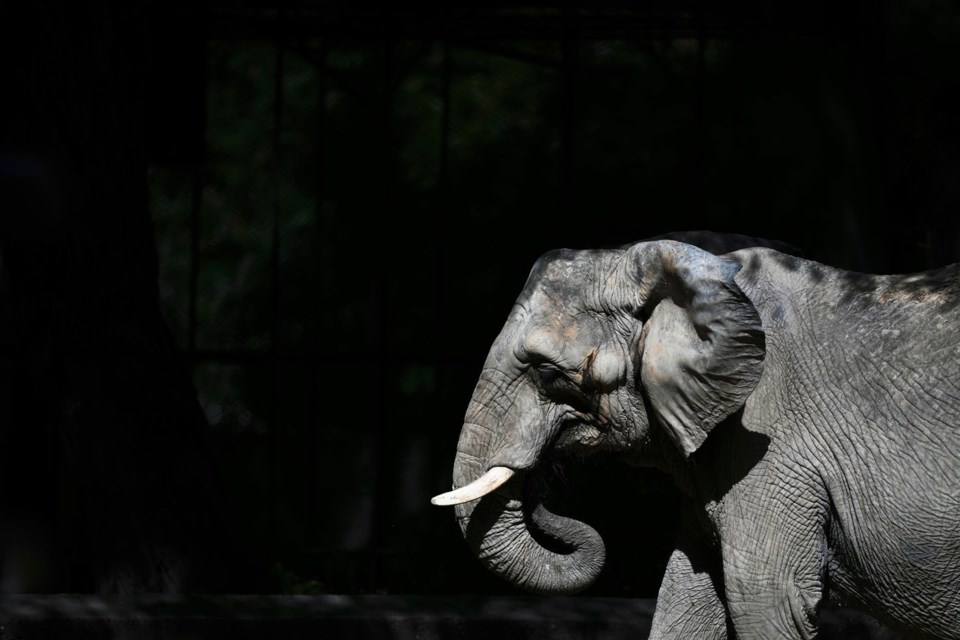BUENOS AIRES, Argentina (AP) — An unusual convoy neared Argentina's lush border with Brazil on Tuesday, after snaking through traffic-snarled roads for hours. Inside the specialized iron crate strapped to a truck and flanked by vans full of caretakers and veterinarians was Pupy, a female African elephant.
She is heading to a better life after spending more than 30 years in captivity as the last elephant of a Buenos Aires zoo that was often criticized for its conditions before it was turned into a nature preserve nine years ago.
Pupy (pronounced POOH'-pee in Spanish) embarked on her arduous 2,700-kilometer (1,670-mile) journey on Monday, from the trendy neighborhood of Palermo in Argentina’s capital of Buenos Aires to the Amazon rainforest of Mato Grosso state in Brazil.
The 3.5-ton pachyderm is expected to arrive at her new home at Elephant Sanctuary Brazil, the first refuge for elephants in Latin America, later this week — a voyage dependent on traffic, weather conditions and customs stops.
As of late Tuesday, Pupy was traversing the verdant northern Argentine province of Misiones, near the border with Brazil.
Standing upright in her crate during the rough road trip, Pupy sleeps and feeds on vegetables, fruit, grass and vitamin supplements. Brazilian park personnel and Argentine handlers monitor her condition during pre-scheduled breaks and through cameras inside the crate.
It took months to prepare Pupy for so many hours of confinement.
“She is making the journey flawlessly,” said María José Catanzariti, a veterinarian and operational manager at the Buenos Aires preserve. "Sometimes in the first 24 hours these animals don’t want to eat, but Pupy keeps eating.”
Pupy is just the latest in a series of over 1,000 wild animals — elephants, as well as lions, tigers, bears and apes — that the Buenos Aires “ecopark” has sent to sanctuaries abroad since its 2016 conversion from a ramshackle city zoo into a species conservation site.
Free from confinement, the animals build new lives in greener pastures. An orangutan named Sandra traded her limited, lonely existence in the Argentine preserve in 2019 for more roaming space and 22 new friends from her own species at the Center for Great Apes in Wauchula, Florida.
Already enjoying the Brazil Elephant Sanctuary are five Asian elephants — including Mara, a former circus elephant that also ended up in the Argentine preserve's enclosure and five years ago made the same highway trip to the refuge, where she now trudges at least 10 kilometers (6 miles) a day.
The Brazilian elephant sanctuary offers newcomers space to adjust to life in the wild, regain behaviors intrinsic to their species and socialize with others after so many years often spent isolated and alone.
Because Pupy can only fraternize with other African elephants, she will be alone adapting to her new habitat before the expected arrival of a fellow African elephant named Kenia.
From a zoo in the city of Mendoza, western Argentina, with a history of similarly poor conditions, Kenia is now undergoing training before making the trip to the sprawling multi-acre refuge, which evokes an elephant’s natural home.
Almudena Calatrava, The Associated Press



